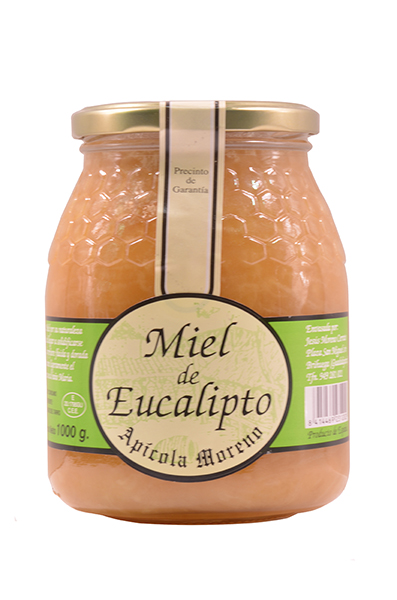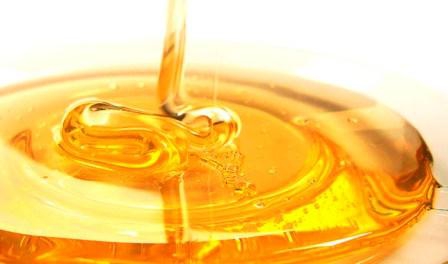The miraculous properties of honey
Bees and raw honey appeared on Earth much earlier than humans in the Tertiary period, approximately sixty million years ago. There is evidence of coexistence with men in the Prehistoric period, as evidenced by a prehistoric painting of about 15 000 years ago, found in the spider cave in Valencia (Spain).
Index:
|
Summary: Honey is a natural product with many beneficial properties. Also, in our shop in Las Rozas de Madrid you will find the widest selection of raw honeys in Spain and the world. Among them, we have: orange blossom, heather,, lavender, rosemary, thyme, manuka, coriander, lemon, loquat, etc.
Other interesting articles: Unpasteurized raw honey
1. Characteristics and properties of honey
The physical characteristics of the honey are as follows:
a) Colour:
Honey ranges in colour from white to dark brown to black, and even yellowish, reddish or greenish honeys can be found. However, the most common colours range from dark brown to amber. In addition, honeys lose colour when they crystallise or solidify.
The colour of honey does not indicate its quality, but its origin. Dark honeys, such as heather honey, come from the honeydew and light honeys, such as rosemary honey, come from the nectar of flowers. When the honey is dark, the honey has a high content of calcium phosphate, iron, bioflavoniods and vitamins B and C. These honeys are ideal for children and students and for people suffering from anaemia. Lighter honeys are rich in vitamin A and antioxidants.
b) Aroma, taste and texture:
There is a wide variety of aromas, flavours and textures of honeys, depending on the raw material from which the bees have made it.
Honeys made from honeydew are less sweet, because they contain salty notes from the minerals, which mask the sweetness of the honey. Within these honeys made from honeydew, there is a wide range of aromas, flavours and textures depending on the origin of the honeydew and the concentration and type of minerals.
Honeys made from flower nectar are generally sweeter, although there are exceptions, such as strawberry tree honey. Each nectar of each plant variety has its own characteristic and distinct aromas and flavours, whose function is to attract insects, especially bees, to carry out the pollination process. This wealth of plant nectars, together with the work of the worker bees, gives us the rich variety of aromas, flavours and textures of honeys.
c) Crystallisation:
Crystallisation is a natural phenomenon that happens to almost all honeys, in which honey changes from a liquid to a solid state. This is because honey is a supersaturated solution (high percentage of sugar in relation to the amount of water) and its stability is increased when it precipitates and becomes solid. In this process, honey does not lose any properties, flavour or aroma.
Crystallisation depends on the sugar content and temperature. The higher the glucose content and the higher the temperature around 14 °C, the faster the crystallisation. Crystallisation can also be stimulated by traces of dust, pollen, wax, propolis or air bubbles.
In the crystallisation process, it is the glucose that crystallises first, and in doing so, water is expelled, which lowers the concentration of the solution of the other sugars in the honey. This forms a liquid phase with a higher moisture content. This may contain small amounts of yeast that promote fermentation of the honey.
Photo 1: Crystallized eucalyptus honey
d) Holm oak glucose oxidase
Honey is the only product made by insects that is consumed by humans. It is a natural product that comes from the nectar of the flowers or honeydew of trees and has been manipulated by bees into honey. The bees reduce the water content of the nectar or honeydew by regurgitating it and passing it from one stomach to another until it has a water content of 12 %. They also add their own enzymes, glucose oxidase, during this process. When they reach this water content, they put it in their cells and close them with wax for preservation and later consumption in the winter months.
The enzyme glucose oxidase, which the bees add to the honey, has the ability to convert sugars into gluconic acid and hydrogen peroxide on contact with water. It is hydrogen peroxide, commonly called hydrogen peroxide, that provides another disinfectant property to honey.
Therefore we have three essential characteristics that make honey: First, it is a highly disinfectant product and therefore an exceptional preservative; its hygroscopic capacity and finally its high acidity and the formation of hydrogen peroxides.
2. Conservation:
The properties of honey are altered by humidity, light, and heat, so it is important to buy fresh honey and store it correctly.
3. Glycaemic index
The glycaemic index or GI indicates how quickly a food raises a person’s blood sugar levels. The glycaemic index is usually 58, although it varies for each type of honey. Compared to white sugar, it is usually between 58 and 65.
The glycaemic index depends on the content of fructose, a type of sugar. Therefore, the more fructose the honey contains, the higher the GI. Conversely, the lower the fructose, the lower the GI.
Source:
The spanish newspaper El PAis: www.elpaís.es







Leave a Reply
Want to join the discussion?Feel free to contribute!